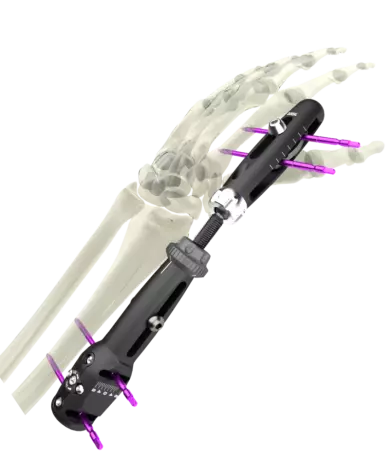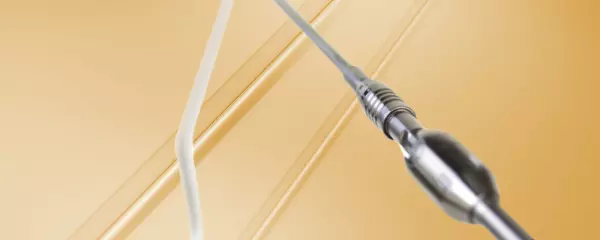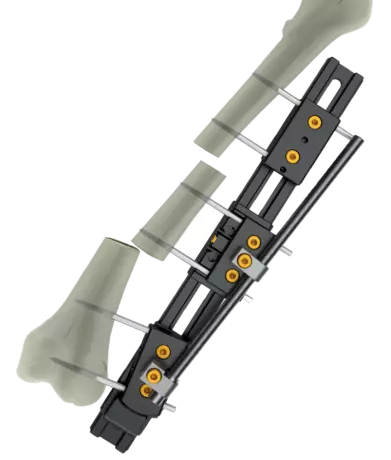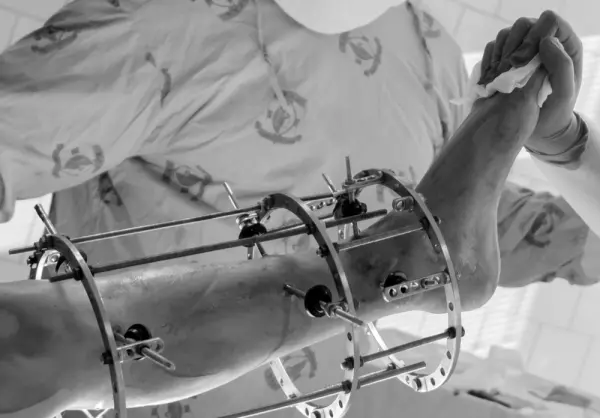
The UniX® Wrist Fixator in the sterile application kit offers a simple and effective solution fo...
Portal and digital medical technology fair of the largest MedTech cluster in Germany

Fixation Instruments Rudolf Storz GmbH offers a large product program for Fixation/ stabilization...

UniX™ Rail Fixator for adults and children
The UniX™ Rail Fixator is a cost-effective alternative to multiplanar deformity correction. Th...

UniX™ Hybrid Fixator with standard and special...
One fixator - X options The UniX™ Standard fixator offers unbelievable mobility, but is ext...

Ring fixator according to Ilizarov
Almost 70 years of experience and well over 1 million cases treated speak for this success story....

One of the most effective ways to rehabilitate broken bones is through the use of external fixators. These devices are used for a variety of purposes, including osteotomies, fractures, and amputations. The use of external fixators allows surgeons to achieve the most natural results possible. These devices are attached to the bone with pins and wires. Once secured, the frame is moved to a new location.
While most external fixators are temporary and are not permanent, they can be reused and have the potential to save the healthcare system a significant amount of money. Reprocessing single-use surgical supplies was first recognized in the 2000's and has improved significantly. In 2005, more than 25% of hospitals used reprocessed single-use devices. Most expensive technical and precision medical equipment is now being reprocessed. But even if you use these devices more often, reprocessing them may still be a good idea.
Another advantage of using reprocessed external fixators is that they can be reused several times. Reusing a device has a number of benefits, including the reduction of infection risk. Since external fixators are reusable, they can be used for multiple patients. Reprocessing devices can also be beneficial in developing countries, where resources are scarce. And in developed countries where expensive implants are not available, this is a great benefit.
External fixators can cause complications such as infection and inflammation. During the procedure, the fixator is removed, but it can lead to an infection or a scar. In such cases, the patient is not required to stay in the hospital overnight. In addition, the external fixator can be replaced with a brace or cast. If you've had an operation recently, your doctor may recommend an external fixator to prevent future infections.
External fixators are often used for severe traumatic injuries. They allow access to the soft tissues and minimize edema and muscle atrophy. Moreover, the use of external fixators minimizes the chances of infection and edema, which can be harmful to the patient's health. Further, these fixators are less costly and require fewer surgeries. If you've had a serious injury, an external fixator can help you recover faster and avoid complications.
Reprocessed external fixators are not the best option for patients. They can be unsanitary and can lead to an increased risk of infection. They can also pose a financial burden on the health care system. Reprocessed external fixators are not as safe as new ones. If you're in need of one, consider buying a secondhand model. It's the same principle as buying a used car. The second-hand option can lower your costs and decrease medical waste.
External fixators are used to stabilize the bones of the leg. They are usually used for open and closed fractures. It's not recommended for deeper-boned patients, as the risk of infection and pin tract sepsis increases. In addition to improving patient care, external fixators also improve the environment. It is also a good choice for patients suffering from traumatic injuries. It can be reprocessed to reduce waste.
Become a digital exhibitor yourself in the online portal of the largest and best-known MedTech cluster region in Germany and inform the world of medical technology about your products and services as well as about news, events and career opportunities.
With an attractive online profile, we will help you to present yourself professionally on our portal as well as on Google and on social media.